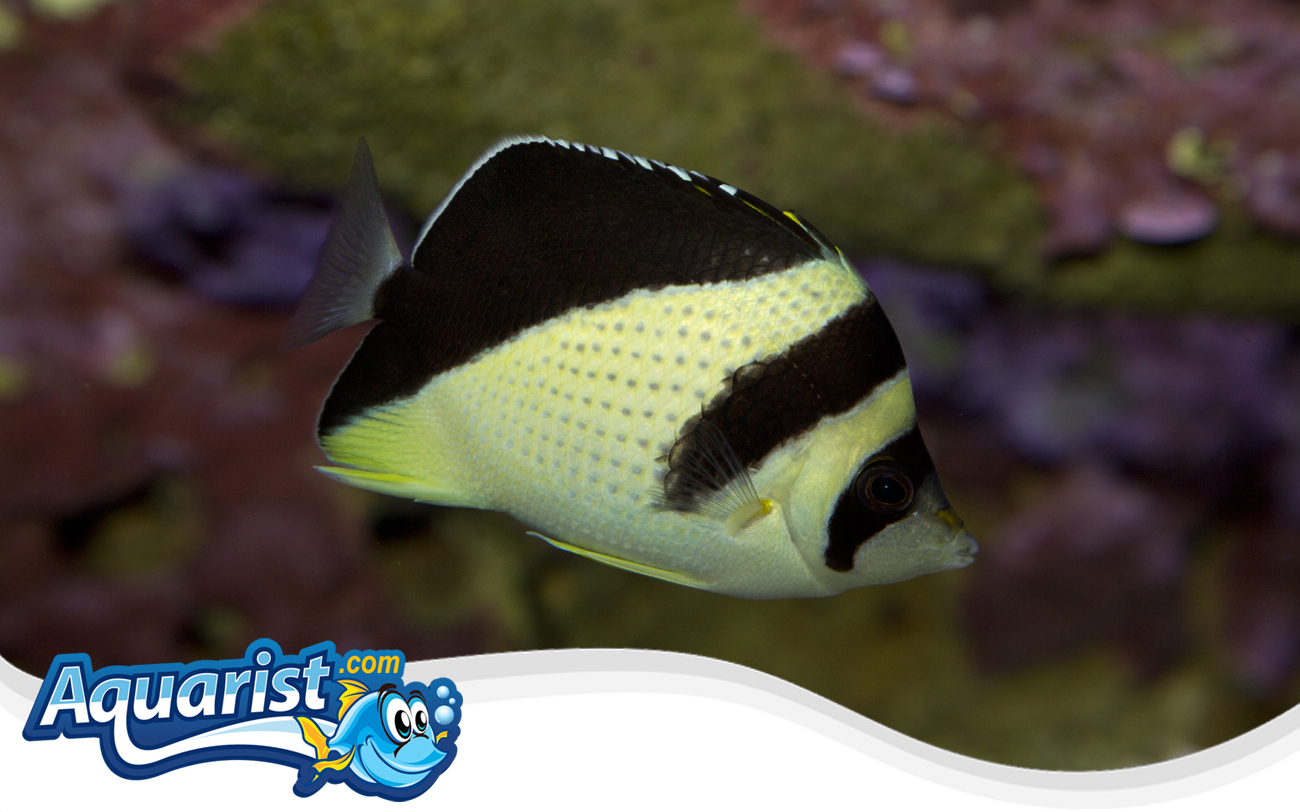Overview
- Native to the Indo-Pacific, frequently found in deeper reef environments and rocky outcrops.
- Recognized by its striking black and white coloration with diagonal bands across its body.
- A relatively hardy species compared to other butterflyfish, making it a suitable choice for advanced aquarists.
- Often found at greater depths than many other butterflyfish species, preferring more shaded environments.
- Best suited for a well-maintained aquarium with plenty of swimming space and live rock formations.
Feeding
- Omnivorous, feeding on small invertebrates, coral polyps, and sponge matter in the wild.
- Requires a diet of sponge-based foods, frozen mysis shrimp, and high-quality marine pellets in captivity.
- May be slow to accept prepared foods initially but can adapt with time and consistency.
- Offering multiple small meals throughout the day mimics its natural feeding behavior and promotes overall health.
- A well-balanced diet helps maintain strong immunity and vibrant coloration.
Habitat
- Commonly found in deep reef slopes and areas with significant coral growth.
- Prefers low-light conditions due to its natural habitat, making subdued lighting in aquariums beneficial.
- Aquarium setups should incorporate live rock structures to provide natural grazing areas and hiding spots.
- Thrives in well-oxygenated water with stable parameters, requiring high-quality filtration.
- Providing shaded areas and plenty of rock formations helps encourage natural behaviors.
Fish Care
- Optimal water temperature: 74-80°F (23-27°C) to support overall health.
- Preferred pH range: 8.1-8.4, with a salinity level of 1.020-1.025.
- Requires consistent water quality with frequent water changes to maintain stability.
- Not considered reef-safe, as it may consume soft corals and sessile invertebrates.
- Providing a well-structured aquarium environment helps reduce stress and supports natural feeding habits.
Compatibility
- Generally peaceful but may display territorial tendencies toward other butterflyfish.
- Compatible with tangs, angelfish, and other non-aggressive reef fish.
- Not suited for traditional reef aquariums, as it has a tendency to nip at coral polyps and smaller invertebrates.
- Should not be housed with overly aggressive species that may intimidate or outcompete it for food.
- Providing adequate space and hiding areas minimizes stress and aggressive interactions.
Aquarium Behavior
- An inquisitive and observant species that enjoys exploring its surroundings.
- Frequently seen picking at rock surfaces and investigating its environment.
- Can be shy initially but becomes more active as it acclimates to its tank.
- Providing live rock supports natural grazing behavior and creates a sense of security.
- Over time, it may recognize its caretaker and become interactive, especially during feeding sessions.


